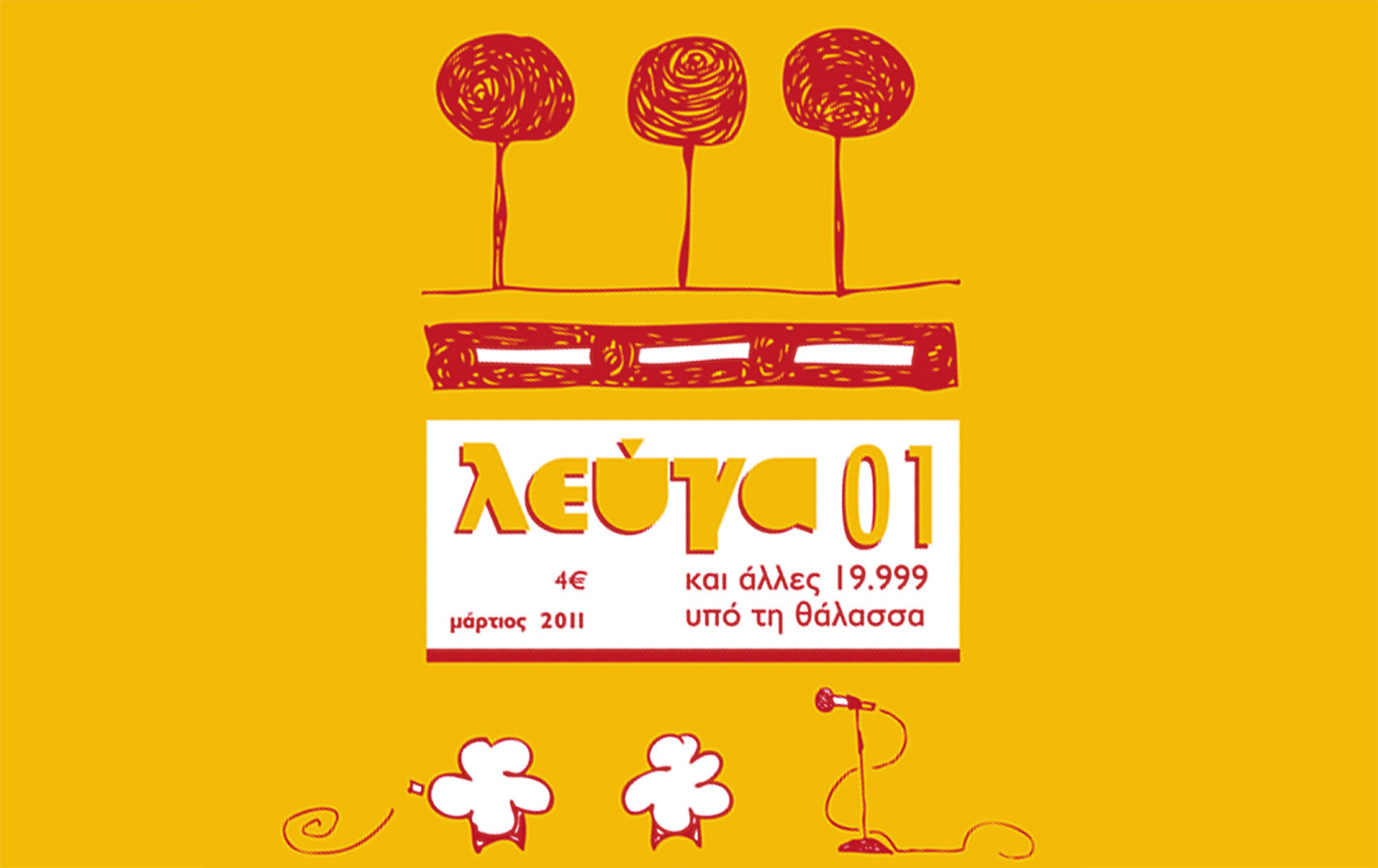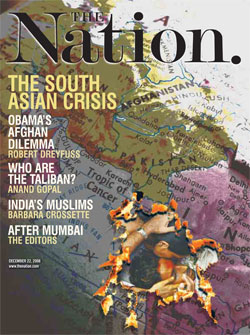One Issue That Seems to Be Getting Bipartisan Support in the Senate One Issue That Seems to Be Getting Bipartisan Support in the Senate
When Cruz begins a crude bombard, He speaks with reckless disregard. So even those who share his views Tend not to want to shmooze with Cruz.
Mar 20, 2013 / Column / Calvin Trillin

Unreal Choices: On The Feminine Mystique Unreal Choices: On The Feminine Mystique
For Betty Friedan, feminism was humanism: a question of growth, maturation and identity.
Mar 20, 2013 / Books & the Arts / Julia M. Klein
Neighborhood Neighborhood
Our brick houses had one floor, storm windows to install in October, heavy brass doorknockers, screened-in patios, lawn jockeys, and front porches with wrought iron railings. The rusty bicycles flopped on the driveways, the smell of peat moss in wheelbarrows, the hum of fans from Sears Roebuck, sidewalks turning the color of grocery bags when wet. The luck of a clover with one appended leaf. We had board games like Monopoly shared by three families, the little green hotels disappearing just like the old market and the Bargain Center. The braided oaks with crooked tree houses, the burnt leaves, black fish swimming in air. And on an unseasonably sunny day in late October, I found my mother's floral umbrella and went strolling into the breeze under its spinning canopy, sucking a lemon.
Mar 20, 2013 / Books & the Arts / Judith Harris

The Strange Arcane: On George Saunders The Strange Arcane: On George Saunders
In the short stories of Tenth of December, the impression of chaos belies a careful design.
Mar 20, 2013 / Books & the Arts / Aaron Thier

Shelf Life Shelf Life
On February 20, 1656, Queen Christina of Sweden, having abdicated her throne, fled the country and also renounced her religion. Before long, she paid a visit to Gian Lorenzo Bernini, one of the most renowned men in her newly adopted city of Rome. To him had been entrusted such tasks as embellishing the Porta del Popolo, through which the celebrated convert made her entrance to the papal metropole, refurbishing her short-term lodgings at the Vatican, and designing a luxurious coach to be presented to her as a gift from Pope Alexander VII. But when Christina went to pay a call on the great sculptor, architect, painter and amateur playwright, he greeted her without ceremony, dressed only in his work clothes. “To those who had advised him to change his clothing,” reports his son and biographer, Domenico, “the artist replied that ‘he had no attire more appropriate with which to receive a queen wishing to visit an artist, than this coarse, rough garb, which was indeed proper to that talent that had elevated him to the status of artist in the estimation of the world.’” Christina, the royal bluestocking, was quick to catch his drift: “The sublime mind of that great lady was able to penetrate the significance of this gesture on Bernini’s part.” To penetrate the significance of a gesture is the key to appreciating the art of a man who, in the queen’s eyes, was to remain “the greatest and most illustrious of his profession of all time.” Two centuries later, the eminent Victorian John Ruskin would differ, thundering that it “seems impossible for false taste and base feeling to sink lower” than with Bernini. Since then, the pendulum of taste has swung back in the artist’s favor: we recognize him as the premier Italian sculptor after Michelangelo, and the architect and planner who gave Rome much of its present visual character; his paintings, distinguished by an inwardness and sobriety at odds with the high theatricality of much of his other work, are less familiar but deeply admired by those who know them. It’s telling that the paintings are absent from the latest in a spate of recent publications on Bernini and the most thorough examination to date of his scenographic illusionism, Genevieve Warwick’s Bernini: Art as Theatre (Yale; $55). To bring such a protean figure to life would take an author of great gifts. It’s no fault of Franco Mormando, the author of Bernini: His Life and His Rome (Chicago; $35), that his abilities are not quite so wide-ranging. The Bernini who emerges from his book is above all the “general contractor” and sometimes friend to a whole series of popes (and other well-heeled patrons). Bernini could never have achieved all he did had he not been a consummate courtier. But getting the job is one thing; getting the job done is another. Mormando has less to say than he should about how Bernini’s large and multifarious studio operation functioned—at times he seems to have had every sculptor in Rome in his employ—and not much more about the extraordinary expressiveness of so much of the work Bernini made, or had made to his design. And what about Bernini the man? He’s hard to know, for as Mormando points out, dissimulation was “one of the defining characteristics of the Baroque ‘mentality,’” as well as indispensable to surviving the treacherous politics of the Vatican. (Strange that Bernini’s portrait sculpture—and his painted self- portraits, too—give such a vivid illusion of direct contact.) One has to look carefully through the documents to find gestures that ring with truth. At least once, the gesture was so violent that it remains shocking: in 1638, upon discovering that his brother and collaborator Luigi was having an affair with his mistress, Costanza Piccolomini (the wife of another sculptor in his studio, Matteo Bonarelli), Bernini flew into a rage, chasing Luigi through St. Peter’s and beating him with an iron rod, breaking two ribs. More coldly, he sent a servant to Costanza’s house to slash her face with a razor. It’s as if he conceived of this crime just as he’d have formulated a design for one of his assistants to carve in marble. Please support our journalism. Get a digital subscription for just $9.50! The great artist survived the scandal unpunished, thanks to the intercession of Pope Urban VIII; and strange to say, both Bonarelli and, after a suitable interval, Luigi continued as his employees. The astonishing portrait bust that Bernini had earlier carved of Costanza—could it be the first marble sculpture made for entirely personal reasons?—was given away, and Bernini married, specifying that his wife would need to “prove capable of tolerating his nature, which is neither easy nor ordinary.” Costanza flits like a dark shadow across Mormando’s narrative. Luckily, an impressive study by Sarah McPhee, Bernini’s Beloved: A Portrait of Costanza Piccolomini (Yale; $45), tells a far richer story of a woman who turns out to have been as strong and complex in life as she remains in sculpted stone. Finally, though, it is the artist rather than the enterprising businessman or tormented lover who one really wants to understand more deeply—though both the sensuality of the latter and calculation of the former are part and parcel of the artist, too. Few books offer more insight into Bernini’s working methods than Bernini: Sculpting in Clay, by C.D. Dickerson III, Anthony Sigel and Ian Wardropper (Metropolitan Museum of Art; $65), the catalog of a remarkable little exhibition that opened at the Met last fall and is now at the Kimbell Art Museum in Fort Worth (February 3–April 14). Here, in these bozzetti (experimental models made not for display but as part of Bernini’s thought process), one senses the artist in his “coarse, rough” work apparel, “molding the model,” as a contemporary put it, “with the quickness and variety of movements of a harp player.” But for all the vivacity and spontaneity of Bernini’s gestures, these quicksilver movements were always at the service of an idea to be worked out. More than sculpting, this was thinking in clay. In 2008, Arthur C. Danto surveyed the art of Nicholas Poussin.
Mar 20, 2013 / Books & the Arts / Barry Schwabsky
The Quarrels of Others: On Anti-Semitism The Quarrels of Others: On Anti-Semitism
With Anti-Judaism, David Nirenberg has recast the debate about the origins and nature of anti-Semitism in Western thought.
Mar 20, 2013 / Books & the Arts / R.I. Moore
The Dark Side of Democracy The Dark Side of Democracy
The lead-up to the Iraq War ten years ago shows us how the media today falsely correlates importance and exclusivity.
Mar 14, 2013 / Blog / Eric Alterman and Reed Richardson
Kim Jong-un, Dictator of North Korea and BFF of Dennis Rodman, Threatens to Use Nuclear Weapons Against the United States Kim Jong-un, Dictator of North Korea and BFF of Dennis Rodman, Threatens to Use Nuclear Weapons Against the United States
Now Kim, who’s the strangest of big bomb possessors, Says he’d use his nukes against Yankee aggressors. Should we build some shelters? No, Kim is no menace, Since he knows a nuke strike could take out his Dennis.
Mar 13, 2013 / Column / Calvin Trillin
The Rehabilitation of Elliott Abrams The Rehabilitation of Elliott Abrams
Click on the Elliott Abrams page on the website of the Harry Walker speakers’ agency, and you’ll learn a great deal about its subject. He is a senior fellow at the Council on Foreign Relations and the author of Tested by Zion: The Bush Administration and the Israeli-Palestinian Conflict, recently published by Cambridge University Press. An ex–congressional staffer, former national security official in the Reagan and Bush II administrations, and a member of more boards and organizations than one can easily count, Abrams is also, according to the “accolades” provided by the agency, a big hit with the Jewish federations, temples and synagogues to which the Walker pitch is unmistakably directed. Here’s what you won’t learn: in the Reagan State Department, Abrams (who also teaches foreign policy at Georgetown) repeatedly and purposely misled Congress about the government’s involvement with the death-squad-riddled Salvadoran military, the Nicaraguan Contra counter-revolutionaries and other Central American mass murderers. He whitewashed their massacres as well as the abuses of the Argentinean junta (who were kidnapping babies at the time and selling them) and the genocidal Guatemalan regime of Gen. Efrían Ríos Montt (currently on trial for crimes against humanity). Abrams did all this while casting aspersions on the motives of journalists and human rights workers who sought to tell the truth about these crimes. As a result of these offenses, among others, Abrams was forced to plead guilty to unlawfully withholding material information from Congress and to apologize to the Senate Intelligence Committee. He was also disbarred in the District of Columbia. After biding his time during the Bush I and Clinton administrations, Abrams resumed his previous patterns. According to a report in the London Observer, as a staff member of President George W. Bush’s National Security Council, Abrams enjoyed advance knowledge of, and “gave a nod to,” the (briefly successful) military coup against the democratically elected Hugo Chávez in 2002. Later, when he was promoted by Condoleezza Rice to run the NSC’s Israel/Palestine desk, Abrams apparently sought to subvert the 2006 Palestinian elections. As The New Republic’s John Judis explains (adding to earlier reporting by David Rose in Vanity Fair), when Hamas did much better in that election than Abrams and Rice had expected, Abrams apparently “sought to nullify the results and to block a unity government between Fatah and Hamas, even though such a government might actually have become a credible partner in peace negotiations. And the Bush administration helped arm Fatah’s security forces against Hamas, which stoked the civil war and led to Hamas taking over Gaza. According to this narrative, Hamas was basically right about American intentions,” and it was Abrams’s now familiar combination of arrogance, incompetence and contempt for democracy that helped lead to the collapse of any possible unified Palestinian mandate for peace negotiations as well as Hamas’s subsequent strategic turn toward Iran. Please support our journalism. Get a digital subscription for just $9.50! It was during Abrams’s tenure in the NSC that the United States lost all credibility as an honest broker among Palestinians, something that both George H.W. Bush and Bill Clinton had worked extremely hard to achieve (albeit with decidedly mixed results). Since Barack Obama’s presidency began, Abrams has been largely critical of the president’s attempts to undo the damage that he and his colleagues caused; though, to be fair, he’s been a model of restraint compared with his better half, Rachel Decter Abrams (the daughter of Midge Decter, stepdaughter of Norman Podhoretz and stepsister of John Podhoretz), who is a board member, with William Kristol, of the so-called Emergency Committee for Israel. In a message famously tweeted by Washington Post blogger Jennifer Rubin, Rachel Abrams called on Israel to “round up…the slaughtering, death-worshiping, innocent-butchering, child-sacrificing savages who dip their hands in blood and use women—those who aren’t strapping bombs to their own devils’ spawn and sending them out to meet their seventy-two virgins by taking the lives of the school-bus-riding, heart-drawing, Transformer-doodling, homework-losing children of Others—and their offspring—those who haven’t already been pimped out by their mothers to the murder god—as shields, hiding behind their burkas and cradles like the unmanned animals they are, and throw them…into the sea, to float there [as] food for sharks.” (At no point did Rachel’s husband seek to disassociate himself from these hateful sentiments.) Elliott Abrams’s most recent contribution to the cause came when he baselessly attacked now–Defense Secretary Chuck Hagel as an “anti-Semite” who “seems to have some kind of problem with Jews.” It was at this point that Council on Foreign Relations president Richard Haass felt compelled to distance his organization from Abrams and termed his statements not only false but “over the line.” It’s interesting that this is what, at long last, offended the council’s leadership. But judging by Abrams’s inarguable success as he has made his way through the American establishment, one has to wonder just what it takes to finally get its attention. As in the case of Charles Murray, whose racist arguments were later revealed to be based on neo-Nazi sources, Abrams’s career of lying to Congress, undermining democracies, helping to rationalize and cover up mass murder, and impugning the reputations of those who sought to tell the truth about these horrific acts has failed to dissuade respectable institutions like the Council on Foreign Relations, Georgetown University, and any number of temples and synagogues from treating him as if he had been a perfectly decent and honorable public servant. What does it say about our most influential and important institutions that this lifelong embarrassment to American democracy can be embraced as one of their own? In “Elliott Abrams: It's Back!” (July 14, 2001) David Corn observed: “One Abrams specialty was massacre denial.”
Mar 13, 2013 / Books & the Arts / Eric Alterman

No Exit? Greece’s Ongoing Crisis No Exit? Greece’s Ongoing Crisis
How do Greece’s economists and writers explain its social predicament?
Mar 13, 2013 / Books & the Arts / Mark Mazower
